You may have heard of puppies getting strangles, but did you know that horses can get it too? It is a highly contagious disease and it is very common in the equine world. If you haven’t encountered it yet, chances are that you will at some point in the future.
Strangles ranks at the top in the list of most frequently diagnosed equine diseases across the globe. Young horses are the most susceptible to strangles but horses of any age could contract the illness. It is caused by a treacherous bacteria that wreaks complete havoc on a horse’s immune system.
This horse has a strangles abscess that is popping. This is just one of many potential signs of strangles.
All horse owners should know what to look for and what steps to take if they ever spot the symptoms of strangles in horses on their property. Prevention is the key to stopping the spread of strangles before it reaches outbreak status.
The following will provide an overview of the strangles disease as well as how you can prevent your horse from contracting the contagious illness.
Table of Contents
What is Strangles?
Strangles is a disease found in horses that is caused by the streptococcus equi bacteria. It is highly contagious and tends to be found in younger horses and horses with low immune systems.
The infection can cause a fever, nasal discharge, coughing, swallowing difficulties, wheezing, respiratory distress and abscesses. Strangles is a disease the specifically targets the lymph nodes.
It is a painful, debilitating illness that requires weeks of specialized care and recovery. Due to its contagious nature, strangles in one horse can quickly spread throughout an entire barn.
The bacteria that causes strangles is persistent and resilient. It can live in a source of water for up to a month and can live in previously affected, asymptomatic carrier horses for years. They will continue to shed the bacteria into their environment despite showing no symptoms of the illness. (AAEP.org)
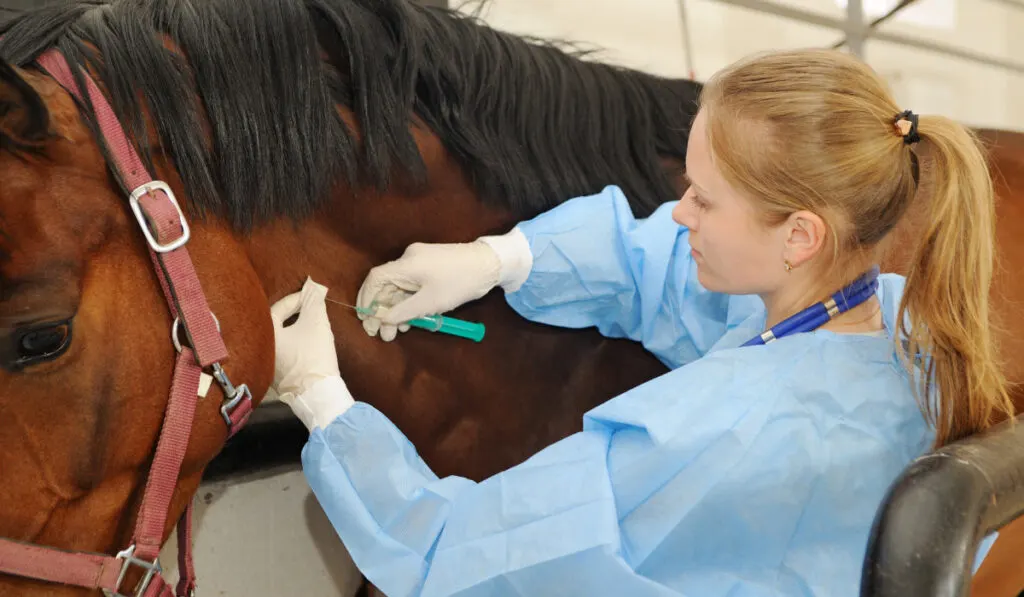
The Strangles Vaccine
A vaccine does exist for the equine strangles disease. There a killed vaccine and a modified-live vaccine currently available for use, however, it is not recognized as a core vaccine by the American Association of Equine Practitioners (AAEP).
That means it not recommended for all horses as a needed annual vaccination. The killed vaccine does not prevent the disease but it does make the severity of a strangles infection easier for a horse to handle.
The modified live vaccine is an intranasal vaccine that does help to prevent the strangles disease by providing a relatively high level of immunity if administered properly.
With either vaccination, you horse can still contract strangles, but their illness will be less severe than that of a nonvaccinated horse. (AAEP.org)
Should my horse get the strangles vaccine?
The AAEP places the strangle vaccine in the risk-based vaccination guidelines, therefore, you should typically only get the vaccine for your horse if they are at risk of infection.
If you know of an outbreak in your barn or at a show your horse attended, then yes, your horses probably should receive the vaccine. If a horse on your property is a carrier, then all the horses on your farm should get the strangles vaccination annually or sometimes bi-annually.
If there are repeated outbreaks on or near your farm, the strangles vaccine is often recommended. There are some adverse side effects, however, such as an allergic reaction known as purpura hemorrhagica which involves bleeding and swelling under the skin in the gums, legs, and joints.
Due to the potential for allergic reactions, it is not often recommended for every horse as a part of their annual vaccination plan. (AAEP.org)
Transmission of Strangles in Horses
The bacteria that causes strangles can be transmitted in two ways:
- Strangles can be transferred through direct contact with a horse that is infected with the bacteria or a horse that is a carrier of the bacteria.
- Strangles can be transferred indirectly, meaning that a horse can come in contact with bacteria that is left behind from an infected horse or carrier.
The bacteria can be left behind in feed troughs, water buckets, stalls, and other surface areas. The bacteria streptococcus equi shows an enormous aptitude for surviving in the environment, so it tends to stick around for a while, sometimes up to a few days if the conditions are right.

Extreme high or low temperatures are often no match for this bacteria, although 24 hours of direct sunlight does tend to destroy it.(AAEP.org)
According to the American College of Veterinary Internal Medicine, infected horses will continue to shed the bacteria through their nose for up to 6 weeks, even after their nasal discharge has ceased. ( source )
The lifecycle of Strangles in Horses
Incubation Period
The strangles disease usually incubates in horses anywhere from 3 to 14 days after the horse has been exposed to it.
The first sign following the incubation period will be a fever, around 103 to 104 degrees. Somewhere between 24 and 48 hours of that first sign fever, you will begin to see symptoms of the strangles illness emerging in your horse. (MerckVetManual.com)
I created this temperature tracker (a free .PDF), to be able to help tell if a horse may be getting strangles. When a barn is exposed, this can help you decide who to isolate.
Symptoms of Strangles
The symptoms of strangles range from severe to mild. Some horses may display the common, more severe symptoms of a high fever, cough, nasal discharge and marked weakness.
One major symptom of strangles includes abscesses in their lymph nodes around their jaw, mouth or neck.
Other horses may only have a mild fever, a little nasal discharge and just no desire to eat their food. They may or may not develop nasal discharge. It all depends on the amount of bacteria the horse was exposed to, their age and whether or not they have been vaccinated in the recent past.
Horses that only have the mild, hardly noticeable symptoms are the ones most like to spread the illness. This is because it is not recognized early enough to prevent transmission to other horses.
If you have one horse with strangles, you will need to keep a very close watch on any horses that may have exposed to the bacteria. (theHorse.com)
Diagnosis
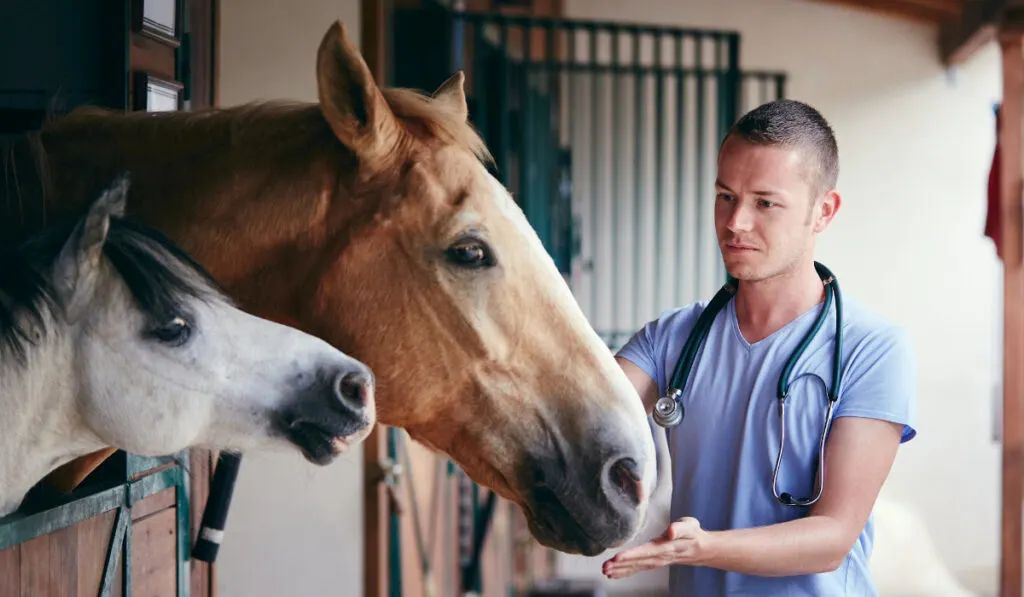
Veterinarians can do bloodwork that can help confirm the infection, but it not conclusive. The ideal test is to take a sample from an abscessed lymph node and test it for the bacteria streptococcus equi.
The bacteria invades lymph nodes, therefore this is often the best place to find it. Veterinarians can also perform nasal swabs as well as guttural pouch washes and test them for the bacteria.
According to a study published in the Journal of Veterinary Internal Medicine, this test is not conclusive, as the bacteria may not show up even though the horse is infected. It may take multiple nasal swabs and guttural pouches washes over the course of a few days to obtain a sample that tests positive. (read the study)
Treating Horses for Strangles
The treatment for strangles varies based on the severity of the disease and how the horse is coping. If the illness is caught in the early stages, before any abscesses form, the antibiotic Penicillin can be administered.
A large number of veterinarians recommend letting the illness simply run its course without antibiotic treatment, as long as the horse is healthy and managing the symptoms well.
Treating the symptoms and providing a healthy environment for your horse to recover in is the key to helping your horse get better.
Your vet may want to rupture any large abscesses and have you flush them regularly until there is no more discharge.
Treatment also includes quarantining any horses that have been exposed to strangles. They should be placed in an area that is well ventilated and cleaned regularly to prevent flies as much as possible.(MerckVetManual.com)
You may also find that your horse is struggling to eat its food, especially if its throat is swollen. You may need to soften its feed or switch to something easier for them to eat.
You should consult with your vet to decide on any food changes during an illness. Your veterinarian can ultimately help you decide on the treatment plan that will help your horse the most. (source)
Quarantine for Horses with Strangles
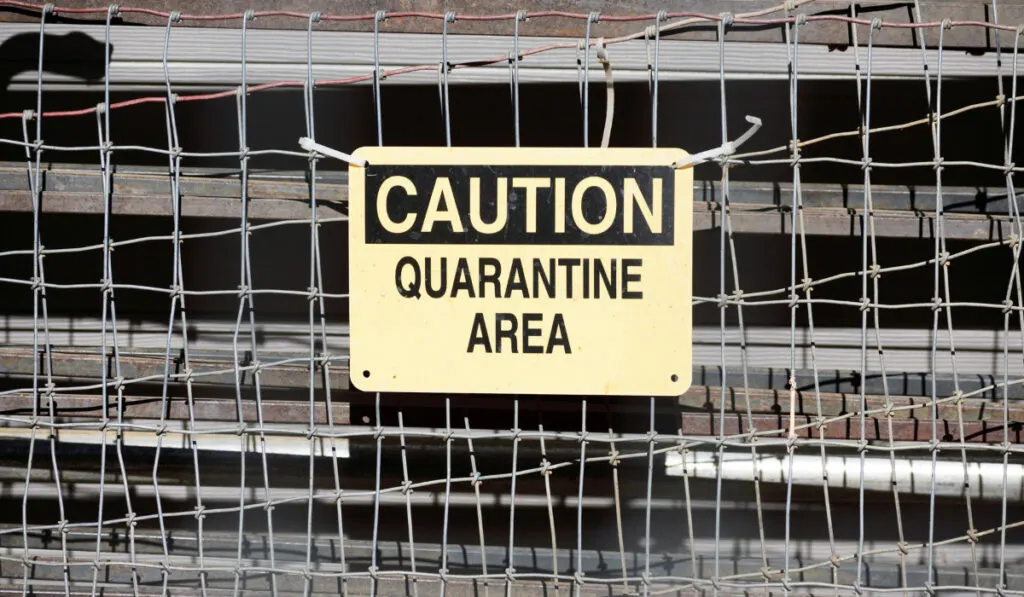
Horses infected with the strangles disease should be quarantined for the duration of the illness and for the recovery period as well. Even though a horse appears to be nearing the end stage of their recovery, they can still spread the disease.
Quarantine of infected horses keeps them from infecting the healthy horses on the property. This also makes the cleanup easier to manage as well. If the infected horse is isolated from the rest of the herd, you can easily clean and monitor everything they come in contact with. This will keep the illness isolated to their area only and hopefully prevent the disease from spreading.
You should put the infected horse in a clean environment with fresh shavings away from all healthy horses. If you are caring for a horse infected with strangles, you should try to stay away from healthy horses until you have changed your clothes and showered.
If you can, have another person care for the uninfected horses. This just prevents any further cross-contamination as the bacteria can attach itself to you and use you as transportation to the rest of the herd.
Anything that could be contaminated should be cleaned thoroughly with detergent and disinfectants. This includes any buckets, hoses, brushes, feed scoops, lead ropes, halters and anything that has come in contact with the infected horse.
If you aren’t sure how to clean and disinfect brushes, check out my post with instructions.
You should also clean out any communal water tubs regularly as well. It is important to know that the bacteria that causes strangles can live for a few days on surfaces and up to a few weeks in water sources. (MerckVetManual.com)
Recovery Period
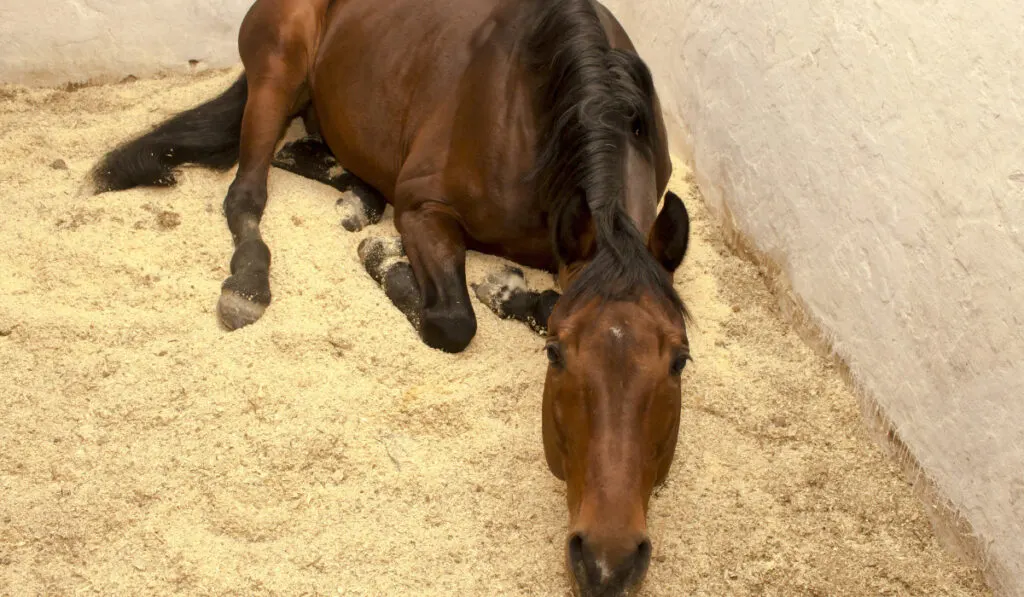
The recovery period for each horse varies and depends on the amount of bacteria to which they were exposed.
The majority of horses should recover somewhere between 2 and 4 weeks. Younger or older horses may take a little longer to fully recover.
If you find that your horse is taking longer than normal to recover, you will want to consult your vet. It is possible that they have a guttural pouch infection and will need additional treatment.
According to the American Association of Equine Practitioners (AAEP), guttural pouch infections can take up to four months to heal. (source)
Once your horse recovers from strangles and is back in full health, it is important to know that they could possibly continue to transmit the disease for weeks. You will want to keep them away from the rest of the herd for an additional 6 weeks if at all possible. (Ontario Ministry of Agriculture)
Carriers of Strangles
Horses that have been infected with the strangles causing bacteria streptococcus equi can become carriers. This means, that although significant time has passed, they continue to shed the bacteria in their excrement.
It is estimated that about 10-40% of infected horses will become carriers of strangles. (theHorse.com) They do not show any signs of the disease and carrier status cannot be detected by simply looking at the horse.
There are screenings designed to find carriers, but testing for carrier status is not mandatory or often suggested by vets. A carrier, because they show no symptoms, can easily spread the illness to a large number of horses in a short amount of time.
Due to this carrier status possibility, it is important to quarantine any new horses on your farm for at least a few weeks and have a vet test them to make sure they are not carriers.
A research study performed by Ashley Boyle, DVM, a veterinarian in Pennsylvania, revealed that the best method to testing for carriers for the strangles bacteria is through guttural pouch sampling using a LAMP test.
If a new horse is a carrier, and you don’t quarantine and test them, you could essentially spread the illness throughout your herd in a short amount of time. (theHorse.com)
Complications of Strangles
Bastard Strangles
Bastard strangles, also known as metastatic strangles, occurs when the strangles disease spreads throughout a horse’s body and affects multiples areas, not just the upper respiratory system.
According to a study in the Journal of Veterinary Internal Medicine, this presentation, the brain, stomach, and mammary glands are most commonly affected. (source)
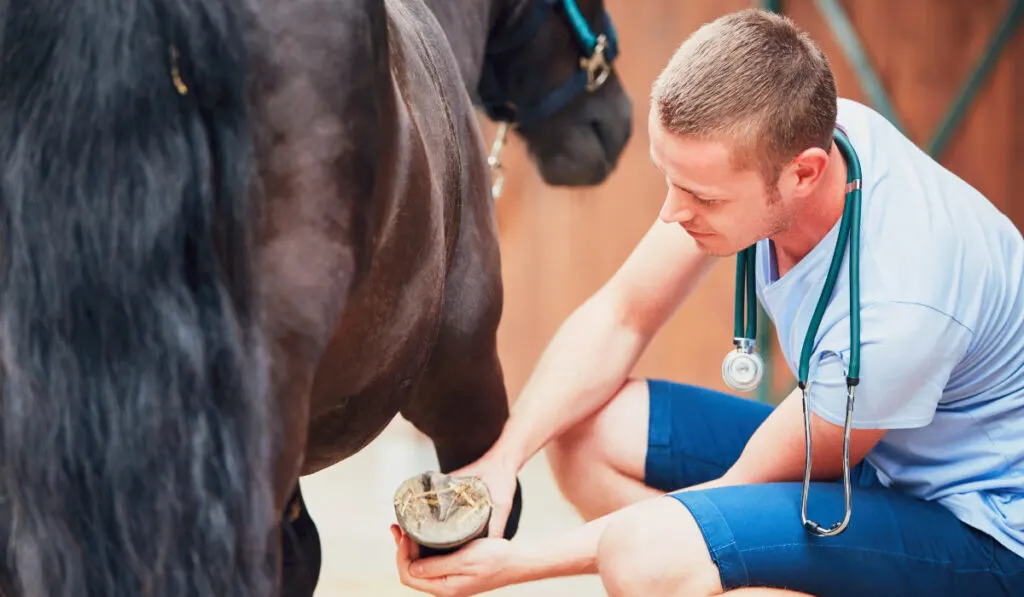
Some veterinarians believe that antibiotic treatment administered after the early signs of the strangles illness could lead to bastard strangles. These abscesses could appear in your horse weeks after you thought the original strangles illness was resolved. (Ontario Ministry of Agriculture)
An abscess in the brain can burst and cause sudden death in a horse. An abscess in the throat could rupture and cause the horse to inhale the contents into their lungs.
If your horse continues to act ill or shows signs of distress in the weeks after recovery, you should contact your vet to rule out bastard strangles.
Purpura hemorrhagica
This is an immune-mediated response to the infection in strangles and sometimes to a strangles vaccination. It is an acute inflammation of blood vessels that results from the creation of immunity responses between the antibodies and the streptococcus equi bacteria.
These complications typically appear somewhere within four weeks of contracting the strangles disease. Purpura hemorrhagica can lead to edema, swelling as a result of water retention, throughout a horse’s body including their head and legs. (Ontario Ministry of Agriculture)
Guttural Pouch Infections
The guttural pouch on a horse is an air-filled sac that extends from each eardrum to the pharynx. It is thought that this structure helps to control a horse’s temperature and many other necessary functions. It is made up of many vital nerves and arteries.
Due to the location of the gutteral pouch and warm environment, it is highly susceptible to infection. The bacteria that causes strangles, streptococcus equi, is a major cause of infection in a horse’s guttural pouch.
The bacteria strikes the lymph nodes of the horse and these infected lymph nodes can potentially burst open inside a horse’s throat allowing the pus to pool in the guttural pouch.
This infection can cause the nerves and functions of the pouch to not work correctly, resulting in swallowing issues and other upper respiratory distress.
You will notice swelling near the location of the guttural pouch as well as your horse having issues eating and drinking due to nerve incapacitation.(EquiMed.com)
If the guttural pouch becomes infected, it can be hard to eliminate the infection. It can take anywhere from 2 to 4 months to eradicate an infection from the guttural pouch. (theHorse.com)
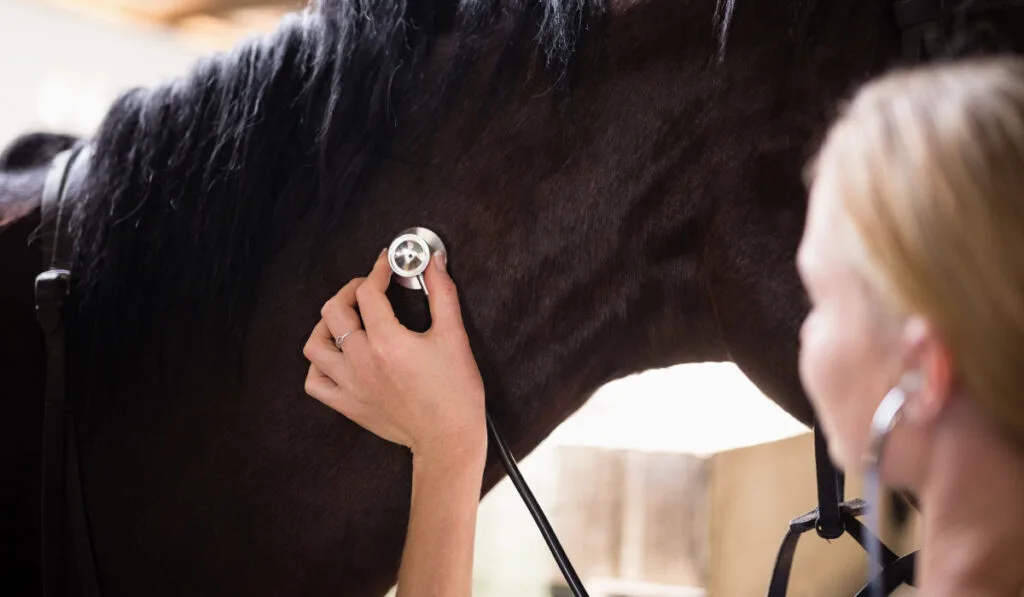
Can Humans Get Strangles?
Humans can’t get strangles from a horse, but they can get an infection from the subspecies of the strangles-causing bacteria Streptococcus equi.
The subspecies zooepidemicus can be transmitted from horses to humans. If infected with this zooepidemicus, a human being may exhibit signs such as cough, lethargy and nasal discharge.
It is very unlikely that this bacteria will cause any illness in humans, however, it is possible.
The CDC investigated a possible zooepidemicus and horse-related death in March 17, 2016. A 71-year-old woman and her 37-year-old daughter both came in contact with a horse that was infected with strangles.
Both developed upper respiratory symptoms, however, the 71-year-old mother began vomiting and later died at the hospital. The CDC confirmed that the mother died from the S. zooepidemicus infection contracted by having contact with a horse infected with strangles.
They believe her death was the result of her age and upper respiratory health. So while you cannot contract strangles from a horse, you can be exposed to a potentially fatal infection.
It is imperative to wash your hands and clothes after caring for an infected horse. Also, be sure to disinfect the containment area as often as you can.
Do not eat or drink anything while you are caring for a horse infected with strangles. It is better to be safe than sorry when it comes to any bacteria. (EquusMagazine.com)
Effective Disinfectants for Strangles Bacteria
Thankfully, the bacteria streptococcus equi is not match for certain disinfectants.
Bleach is a highly effective disinfectant that can be used to kill the bacteria. Follow the directions on the label, as it is concentrated and water will need to be added to make it less toxic.
Always wear gloves and protective gear when using any of these disinfectants. Make sure you are using them in a well-ventilated area to prevent respiratory distress in you and your horse.
You can use products with accelerated hydrogen peroxide as well. In the past, it was used mostly in vet clinics, but it has been used more recently in farms.

Accelerated hydrogen peroxide serves as a cleaning product as well as a disinfectant and can be effective on the majority of surfaces. If you are unsure if your disinfectant kills the streptococcus equi bacteria, check the label.
If you are still unclear, consult with a vet. They can tell you whether it is effective or not. (theHorse.com)
Avoid Using A Pressure Washer to Clean Exposed Areas
If you are cleaning to prevent the spread of the bacteria streptococcus equi, be careful when using a pressure washer. It is important to know that the power of the high-pressure water could possibly aerosolize the bacteria and actually cause additional contamination.
This will defeat the entire purpose of using it to prevent disease transmission. You may be better off using disinfectant in spray bottles to get to the hard to reach places in your facility.
If you insist on using a pressure washer, make sure you let the surfaces dry before using your disinfectant. Water can render your disinfectant useless against bacteria. (theHorse.com)
Preventing Strangles At Your Barn
Prevention is the key to keeping strangles away from your facility.
First, all new horses should be quarantined from the rest of the herd for at least 3 weeks to a month. This will give you time to see if the horse has the strangles illness and to have a vet test them to see if they are carriers of the streptococcus equi bacteria.
If the new horses are showing no signs of illness, do not have a fever, and are not carriers, they should be safe to introduce to the rest of the herd.
You can also ask any sellers to provide a document by their veterinarian confirming that the horse is and has been free from disease in the past few months.
Try your best not to let horses come and go at your facility if you can. Transmission from new horses that are not outwardly showing symptoms is one of the main causes of strangles outbreaks in barns and boarding facilities.
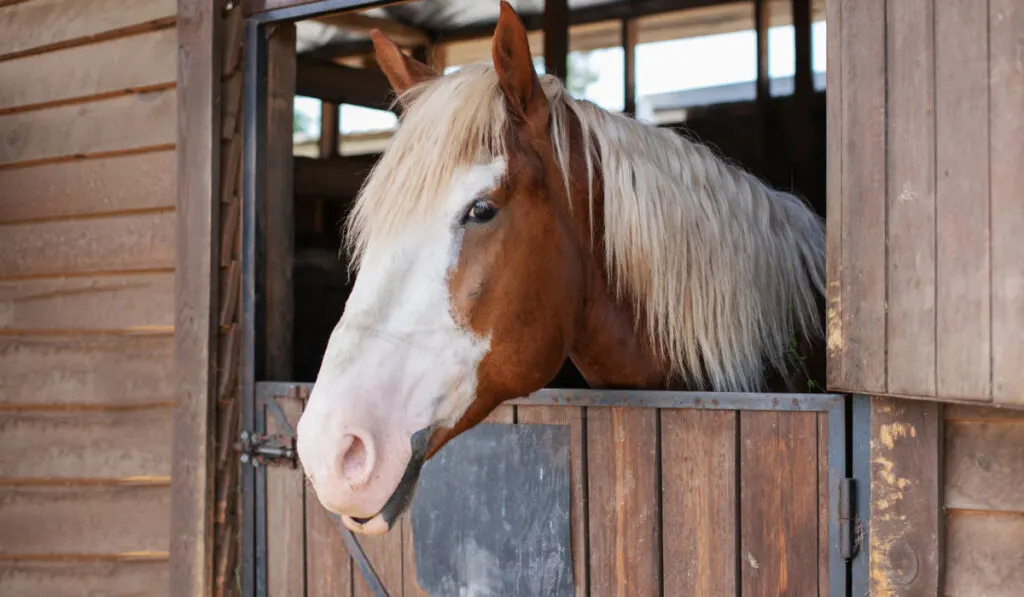
Additional Tips for Preventing Strangles
- Never share water buckets, feed tubs, or tack with strangers and unfamiliar horses at events.
- Keep surfaces in your barn cleaned regularly with disinfectant.
- Regularly clean out and disinfect communal water troughs.
- If you have to board your horse at another facility for an event or when you are camping, disinfect the stall or pen area as much as possible.
- Don’t let your horses drink out of water troughs that are shared by unfamiliar horses, if at all possible. (AAEP.org)
Final Thoughts
Strangles a very common and potentially dangerous disease for horses. Thankfully, most horses recover fully, however, it is still a costly and draining disease that you should avoid at all costs.
The easiest way to prevent the disease is to limit your horse’s exposure to unfamiliar horses, but sometimes it just can’t be avoided.
Remember the signs that you need to look for and have a game plan ready in case strangles ever makes it onto your farm. You will know exactly how to handle it and how to prevent the rest of your herd from contracting the illness.

